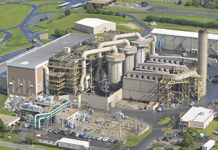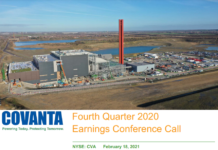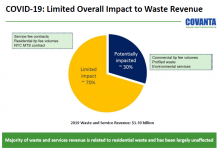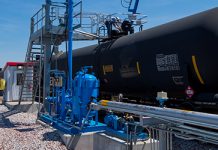by Debra Fiakas CFA
Alternative chemicals developer MagneGas Corporation (MNGA: Nasdaq) is posting another guard at the gate. The company recently filed a patent application to protect new enhancements of its plasma arc technology and gasification system. Plasma is any gas taken to a whole new phase through extremely high temperatures. For perspective the sun is actually a very large ball of plasma. Here on Earth MagneGas is using its proprietary system to gasify carbon-rich liquids such as municipal wastewater to produce hydrogen gas for industrial applications and vehicle fuel.
Many investors have probably heard about plasma gasification technology and might be wary that there is little to differentiate the MagneGas system from everyone else. Granted MagneGas is not the first to use a plasma torch powered by an electric arc. The electric arc provides a spark to ionize a gas and perform an operation like cutting metal. Electric arc welders, torches and furnaces are widely used in manufacturing construction and solid waste treatment.
However, MagneGas has a lengthy history with plasma arc technology. The company’s engineers have figured out how to maintain a stable electric arc under water. Organic matter in the water is catalyzed by the electric arc and turned into a usable gas product. The company calls it ‘submerged electric arc’ and already has received patent protection for their unique application, process and design. MagneGas management touts its submerged electric arc innovation as more effective than vacuum or air electric arc technologies, especially when it comes to liquid wastes.
Technology Turns into Product with Large Market Opportunity
The company is using its plasma gasification system called Venturi to process waste water into a hydrogen-based alternative fuel. The fuel is sold under the brand MagneGas2 as a substitute for natural gas to power industrial equipment or as an alternative to acetylene. A highly flammable colorless gas, acetylene is put to wide use by industry, principally as feedstock for production of chemicals like butanediol. However, acetylene is also commonly used for welding applications and metal cutting because of its high flame temperature. The automotive, aerospace and glass industries are big consumers of acetylene. Yet even these industrial users are sensitive to acetylene’s origins from hydrocarbons via calcium carbide (coke) or from methane combustion and the greenhouse gases that are emitted during the production steps.
MagneGas2 has been well received by the metalworking market because it is over a third faster than acetylene. Using MagneGas2 also reduces the oxygen requirement, saving industrial customers time and money on the job, not to mention improving safety conditions for workers. The company is planning demonstrations of MagneGas2 at trade shows to build awareness and interest. To accelerate the penetration of the industrial market, MagneGas recently acquired a well-established gas distribution company based in Florida. The plan is to cross-sell MagneGas2 to the distributor’s customers.
The company has a challenge ahead. The acetylene market is highly concentrated and dominated by a few well-established suppliers, which compete intensely on price. Air Products and Chemicals (APD: NYSE), Linde AG (LIN: DE) and Praxair (PX: NYSE) are the incumbent acetylene suppliers, from which MagneGas will need to grab some market share by converting users of acetylene to MagneGas2.
Additional Markets
Management has additional markets in its sights. The technology can also be used for sterilization so waste streams can be treated and re-used or safely disposed. Plasma processing of waste is ecologically clean and the lack of oxygen in the process prevents formation of toxic materials. An alliance with Pioneering Recycling has been struck to gain access to the medical waste market, where contaminated organic matter is a common problem. The alliance is planning to use the Venturi system in sterilization mode to efficiently and effectively treat liquid medical wastes.
MagneGas has also teamed up with Future Energy in Australia to target the energy market. An unnamed third party has been lined up to help with a demonstration to prove the viability of co-combusting MagneGas2 at a coal fired power plant. The expectation is for higher electric output and reduced emissions.
Interested parties can also buy the equipment used to gasify liquid wastes such as chemicals or sewage. The company is prepared to sell its plasma arc flow refinery in various sizes from 50 kilowatts to 500 kilowatts at about $10,000 per kilowatt. Sales of the refinery system have been far and few between and do not seem to be a promising revenue source for MagneGas without a more serious business development effort.
Better Mouse Trap at Bargain Price
It appears MagneGas really has invented a better mouse trap in the form of ‘submerged electric arc’ technology, but investors have yet to acknowledge the earnings potential of the invention. Then again valuation is challenging. The company has recorded revenue from early sales of MagneGas2 as well as development contracts, but the company has yet to post a profit. In the most recently reported twelve months sales totaled $1.1 million resulting in a net loss of $6.8 million. Accordingly, MNGA is valued at 27.5 times sales and its price-earnings multiple is negative.
MNGA shares are trading below one dollar per share after backing down from a 52-week high stock price of $2.45. The retreat in the share price might seem appealing for the bargain hunters. However, investors interested in MagneGas technology will need to be patient in waiting for the company’s market penetration strategy to bear fruit. The business model probably will take at least two to three years to unfold. Thus watching quarterly results could get frustrating for investors with a need for fast action. Trading volume in MNGA shares has built up to about 250,000 shares per day, helping to narrow the bid-ask spread to just under a penny. Nonetheless, the stock is relatively volatile as measured by a beta of negative 2.80. A long position in MNGA could quickly show a loss – at least on paper.
Surprisingly given the modest profile of this emerging business, a sizeable short position has built up in MNGA shares equal to about 1.3 million or 6.3% of the shares not held by insiders. If the naysayers are proven wrong about MagneGas, the stock could get a boost higher as traders have to buy shares to close out their losing short positions.
In the meantime, patient investors might consider a reasonable case for sales, earnings and valuation for MagneGas based only on the market potential of its most developed product – MagneGas2. If the company captures just 0.1% of the $40 billion world industrial gas market by successfully selling MagneGas2 as acetylene and natural gas substitutes, it could realize $40.0 million in annual sales. In the long-term a 10% net margin is reasonable for MagneGas based on the success of incumbents in the industrial gas market. That implies estimated earnings per share for MagneGas near $0.11. The large chemicals and industrial gas suppliers are trading at an average of 18.0 times earnings suggesting that MagneGas shares could be worth $1.98 per share under this scenario.
Now that would be financial plasma!
Debra Fiakas is the Managing Director of Crystal Equity Research, an alternative research resource on small capitalization companies in selected industries.
Neither the author of the Small Cap Strategist web log, Crystal Equity Research nor its affiliates have a beneficial interest in the companies mentioned herein.







